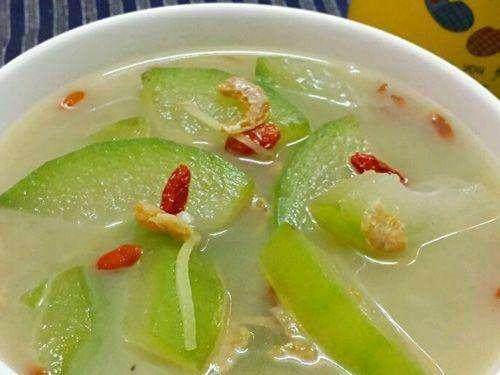Cerebral thrombosis is a common type of cerebral infarction, which refers to the formation of a thrombus in the cerebral artery on the basis of atherosclerosis and plaque formation in conditions of slow blood flow and low blood pressure, with the solid components of blood adhering to the arterial intima, forming a thrombus, which is called cerebral thrombosis. The annual incidence rate is also quite high, so do you know how to prevent cerebral thrombosis in autumn? Here, let me talk to you about the dietary regulation for cerebral thrombosis.
1. Pay attention to daily dietary therapy for the prevention and treatment of cerebral thrombosis
Don’t underestimate the natural small food ingredients around us. Although these ingredients may not seem outstanding, as long as you eat them correctly, they can have a significant effect. Here, let me first share with you a dietary treatment that lowers cholesterol, prevents thrombosis, and avoids cerebral infarction! It’s just right for autumn.
Hawthorn and Winter Melon Soup
25g hawthorn or 15g fresh hawthorn, 100g winter melon. Slice the hawthorn and winter melon with skins, add a suitable amount of water, simmer for 20 minutes, eat the hawthorn and winter melon, drink the soup. Once daily. Hawthorn can dilate coronary arteries and promote the excretion of cholesterol, which can lower blood pressure and blood lipid levels. Winter melon is the only fat-free vegetable, and the malic acid it contains can inhibit the conversion of sugars into fats, preventing the accumulation of body fat and elevated blood lipids. Drinking this soup regularly has a significant effect on lowering blood lipids and preventing thrombosis.
In addition to this dietary treatment, the following small food ingredients used for preparing tea also have good dietary effects for preventing and treating cardiovascular diseases:
Oolong Tea: Oolong tea is produced using semi-fermented technology, so it contains rich tea polyphenols, trace elements, vitamins, and other components, among which tea polyphenols have been proven to be extremely important for lowering blood lipids.
Luo Bu Ma Tea
10g luo bu ma. Preparation method: steep in boiling water, drink after about 5 minutes, 2-3 times daily. It can clear heat, detoxify, have anti-inflammatory and antibacterial effects, soften blood vessels, and is suitable for patients with high blood pressure and high blood lipids, and can prevent cardiovascular and cerebrovascular diseases.
Orange Peel Tea for Lowering Blood Lipids:
In traditional Chinese medicine, orange peel has a pungent and bitter taste and warm nature. It has the functions of regulating Qi, invigorating the spleen, drying dampness, and resolving phlegm. Modern pharmacological studies have shown that orange peel contains hesperidin, which has a lipid-lowering effect and is suitable for patients with phlegm and obesity who have high blood lipids on ordinary days. A suitable amount of orange peel can be steeped in boiling water, covered and steeped for 10 minutes, then consumed frequently as tea. Alternatively, you can use 10g of orange peel and 20g of hawthorn, cook them together in a pot with an appropriate amount of water, simmer for 20 minutes, remove the residue, and drink the tea frequently.
2. In addition to these ingredients, the following dietary principles must be followed:
Limit fat intake
Total fat intake in the diet should be reduced, and cholesterol should also be limited, staying within 300mg per person per day.
Increase protein intake moderately
When reducing fat intake, protein intake should be appropriately increased. Fish, tofu products, lean meat, etc., should not be consumed excessively, maintained at a certain level daily, which is beneficial for lowering blood cholesterol and reducing blood viscosity.
Limit sugar consumption
Excessive consumption of refined sugar and sugary foods should be avoided because sugars in the body can be converted into fats and accumulate, increasing blood sugar, blood lipids, and blood viscosity, which is extremely detrimental to patients recovering from cerebral thrombosis.
Limit salt intake
Be mindful of the amount of salt used, reducing the amount of salt in cooking to around 3g per day is most appropriate.
Pay attention to cooking ingredients
Since excessive salt consumption is not recommended, only a small amount of salt should be used during cooking. The resulting taste may be bland, so to stimulate appetite, a moderate amount of vinegar and sesame paste can be added. Vinegar can season food, accelerate fat dissolution, and soften blood vessels, while sesame paste provides a source of calcium.
Control total calorie intake
To lower blood lipids, total fat intake must be controlled, which is beneficial for all internal organs of the body.
Drink water regularly
Drink water regularly, especially in the morning and evening. Drinking water in the morning can dilute the gastrointestinal tract, while evening water intake can dilute the blood, preventing thrombus formation.
Increase vitamin C intake
Foods rich in vitamin C can lower blood lipids. Thus, consume more foods rich in vitamin C, such as fruits and vegetables, which contain large amounts of vitamin C.
Quit smoking and drinking
Heavy smoking and alcohol consumption are some of the causes of cerebral thrombosis. Smoking can damage the vascular intima, causing small blood vessels to constrict and the lumen to narrow. Alcohol is harmful and offers no benefits to blood vessels.


